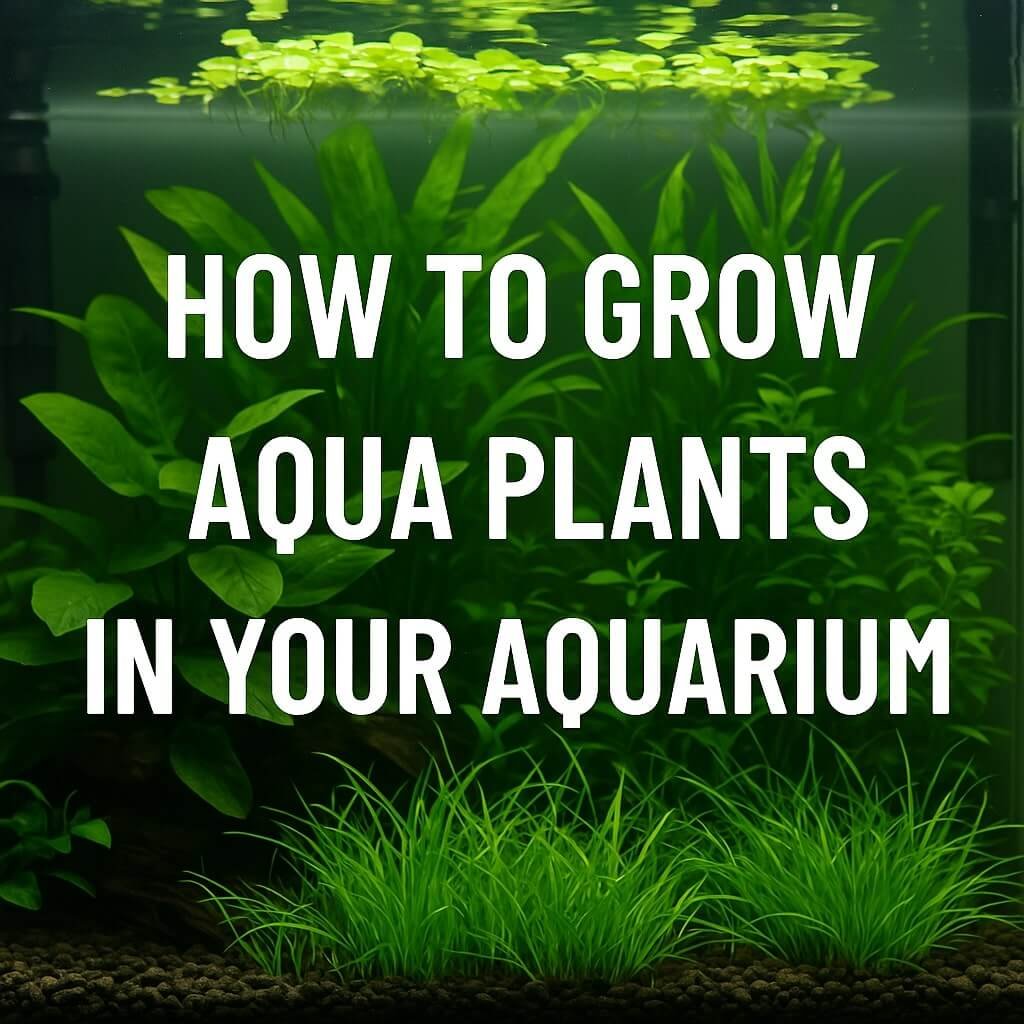A Beginner’s Guide to Thriving Underwater Gardens
Aquarium plants do more than beautify your tank — they oxygenate the water, reduce algae, and create a natural habitat for your fish. Whether you’re a hobbyist or a first-time aquarist, learning how to grow aqua plants in your aquarium can transform your tank into a lush, living ecosystem.
In this guide, we’ll walk you through everything you need to know — from choosing the right plants to maintaining them like a pro.
🧠 Why Grow Aqua Plants in Your Aquarium?
- Natural Filtration: Plants absorb toxins like ammonia and nitrates.
- Oxygen Production: Through photosynthesis, they boost oxygen levels.
- Algae Control: Compete with algae for nutrients, keeping your tank clean.
- Fish Wellness: Provide shelter, reduce stress, and encourage natural behavior.
- Aesthetic Appeal: Create a vibrant aquascape that’s soothing and stylish.
🌱 Step 1: Choose the Right Aqua Plants
🔹 Foreground Plants
- Dwarf Hairgrass: Creates a grassy carpet.
- Java Moss: Easy to grow and great for shrimp tanks.
🔹 Midground Plants
- Anubias Nana: Hardy and low-maintenance.
- Cryptocoryne: Adds texture and depth.
🔹 Background Plants
- Amazon Sword: Tall and dramatic.
- Vallisneria: Fast-growing and ideal for large tanks.
🔹 Floating Plants
- Duckweed: Great for shade and nutrient absorption.
- Water Lettuce: Adds a jungle vibe.
💡 Tip: Start with hardy species like Java Fern or Anubias if you’re new to planted tanks.
🧪 Step 2: Prepare Your Aquarium
✅ Substrate Selection
- Use nutrient-rich substrates like Aqua Soil or Seachem Flourite.
- Add a layer of gravel to prevent cloudiness.
✅ Lighting Setup
- Use full-spectrum LED lights for optimal growth.
- Maintain a light cycle of 8–10 hours/day.
✅ Water Parameters
- pH: 6.5–7.5
- Temperature: 72–78°F (22–25°C)
- Nitrates: 5–20 ppm
🌿 Step 3: Planting Techniques
🔸 Rooted Plants
- Dig a small hole and gently place the roots.
- Avoid burying the crown to prevent rot.
🔸 Rhizome Plants
- Tie to driftwood or rocks using fishing line or glue.
- Keep rhizomes above the substrate.
🔸 Floating Plants
- Simply place them on the water surface.
- Trim regularly to prevent overgrowth.
💧 Step 4: Maintenance and Care
🧼 Weekly Tasks
- Change 10–20% of the water.
- Remove dead leaves and prune overgrowth.
- Clean algae from tank walls.
🌿 Fertilization
- Use liquid fertilizers for water column feeders.
- Add root tabs near heavy root feeders like Amazon Sword.
💨 CO₂ Injection (Optional)
- Boosts growth in high-light setups.
- Not essential for low-tech tanks.
🚫 Common Challenges & Fixes
| Problem | Cause | Solution |
|---|---|---|
| Yellowing Leaves | Nutrient deficiency | Add liquid fertilizer |
| Algae Overgrowth | Excess light/nutrients | Reduce lighting, add fast growers |
| Melting Plants | Stress from new environment | Wait 1–2 weeks, prune dead parts |
| Floating Plants Dying | Poor water circulation | Add gentle filter or air stone |
🧩 Bonus Tips for a Thriving Aquascape
- Layer plants: Tall in the back, short in the front.
- Use hardscape: Rocks and driftwood add structure.
- Avoid overcrowding: Leave space for growth and fish movement.
- Quarantine new plants: Prevent pests and snails.
❓ FAQs: How to Grow Aqua Plants in Your Aquarium
Q1: Can I grow aquarium plants without CO₂?
Yes, many beginner-friendly plants like Java Fern and Anubias thrive without CO₂ injection.
Q2: How often should I fertilize my aquarium plants?
Use liquid fertilizer weekly and root tabs monthly, depending on plant type.
Q3: What’s the best lighting for aqua plants?
Full-spectrum LED lights are ideal. Match intensity to plant needs — low, medium, or high light.
Q4: Do aqua plants need substrate?
Rooted plants do, but rhizome and floating plants can grow without it.
Q5: How do I prevent algae in a planted tank?
Balance light, nutrients, and plant density. Add algae-eating fish like Otocinclus or Amano shrimp.





